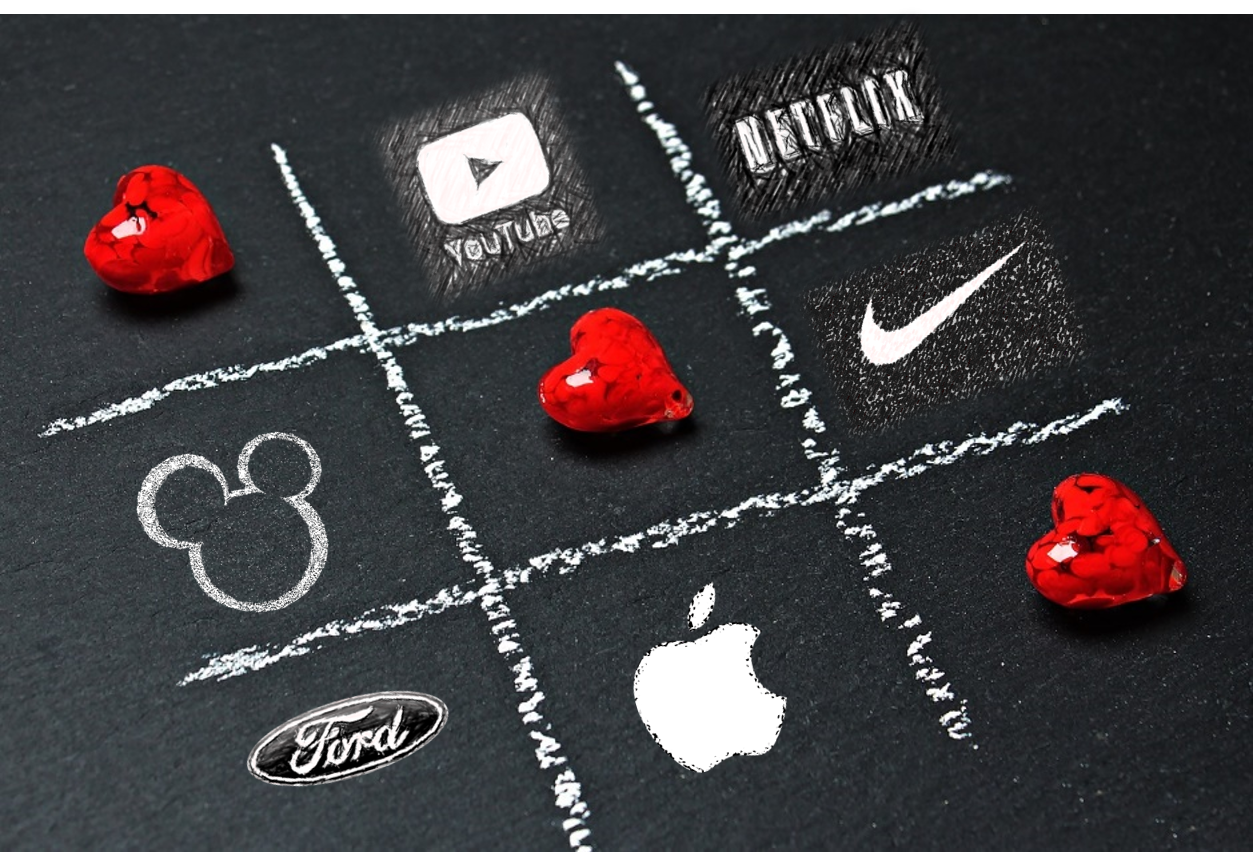
We have a lot of brands in our lives – some we treasure, some we take for granted, some we resent.
As marketers work tirelessly to provide value and strong image-building, as well as attract attention for the companies they represent, there’s research that measures the comings and goings of brands. This year’s MBLM Brand Intimacy study talked to 3,000 consumers, asking them to rate 400 brands on a “can’t live without” scale.
Here’s the top 12, based on “cumers” (people who use these brands) who say each is essential to their lives. Perhaps not surprisingly, Apple, Google, and Amazon have managed to create a certain level of indispensability in our lives. Many of us own Apple products, we regularly use Google web tools, and we buy lots of stuff from Amazon.
Note that Facebook didn’t make this chart – nor did any other social platform. But Spotify and YouTube did, the only “media” outlets on the list. Somehow, AT&T did, too (not sure what that’s about, other than a lot of people who use the telecommunication company for their connectivity).
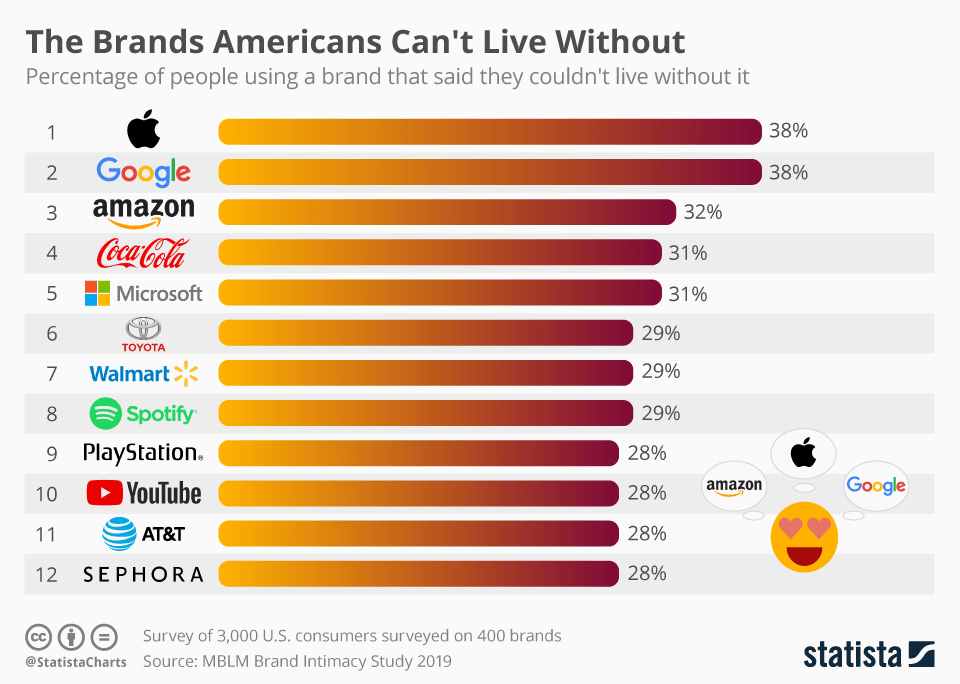
So, there’s necessity. But then there’s the emotional connection – a whole different animal.
Digging deeper into the MBLM website, I came across their 2019 Brand Intimacy Study. It’s comprised of 6,200 respondents. And its top 10 rank positions have some divergence from the above list of “can’t live without” brands.
For brands, the intimacy factor runs deeper, signifying a relationship where the consumer feels a part of the action. It’s a more meaningful measure than the way we typically ask this question in radio research studies: “What’s your favorite radio station?”
It’s about brands that generate a sense of loyalty and connectedness with their customers – in radio’s case, listeners and advertisers.
And according to MBLM, consumers are willing to pay more in order to engage with these brands – about 20% more on average. We see this with brands, from cars to motorcycles to hotels. And we also see it in radio. Advertisers consistently have favorite media brands – often in spite of the ratings and other factual evidence. There are stations they’re willing to overpay for – again and again.
Here’s the list of this year’s most intimate brands:
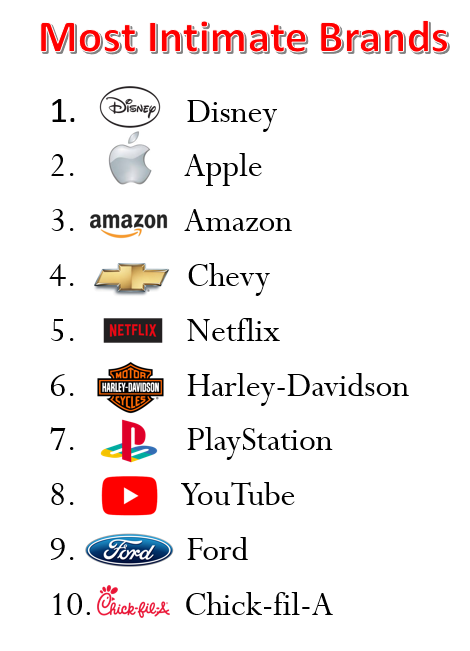
The big news on this chart is Disney supplanting Apple – the first time Steve Jobs’ old company has fallen out of the top slot in several years. For Disney – a company that continues to raise its prices at its theme parks – it’s a first. And that says something about how it has established and grown its brand intimacy.
Google is obviously more of a utility – thus, its absence on this list. That may be the case for Spotify as well – a fine place to compile playlists and listen to music. But intimacy? Nope.
YouTube is the media brand that shows up on both lists, all the more impressive when you isolate Millennials in this same study. YouTube’s dominance is impressive, spelling even more angst for Apple and other media/technology brands:
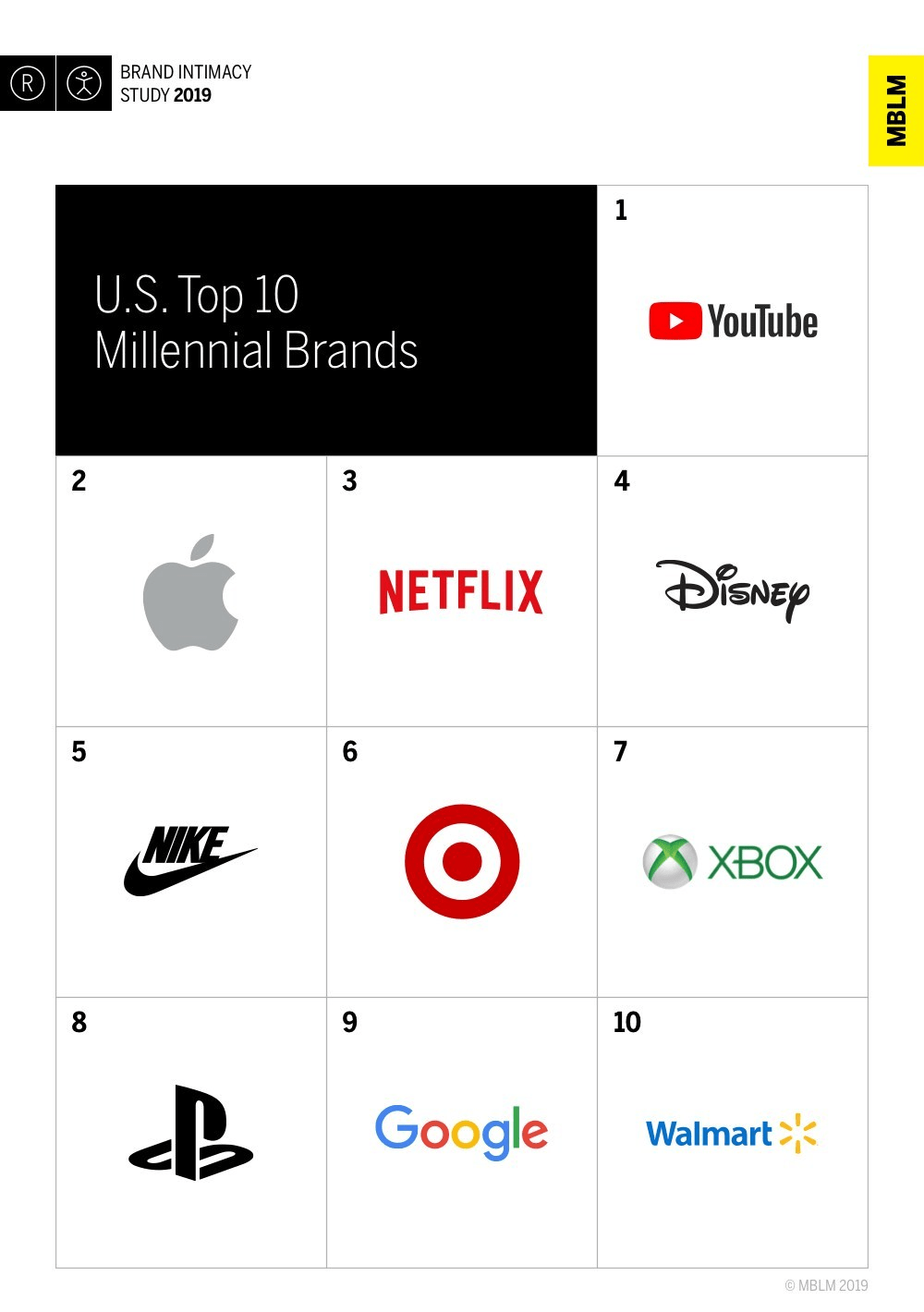
Here’s how the MBLM analysts explain YouTube’s rise to the top of this impressive heap:
“The brand has demonstrated an ability to entertain a diverse millennial audience through its extensive content. It is also continuing its expansion of services, including the launch of YouTube Music in 2018, as it finds new ways to connect with consumers. Millennials in particular bond strongly with the media & entertainment industry and YouTube is doing a good job at building a brand that caters to the wants and needs of this audience.”
And then there’s Netflix – once a distribution play, now a content creator, too. But they’re so much more than that. Netflix is solving any number of problems for consumers, one of the reasons why it’s top 5 on both lists. It has changed the way we watch television.
Netflix earns extra points by displaying it knows its users, offering up more content and creating “viewing occasions.” The other night, my wife finished watching the new season of “Grace and Frankie.”
Here’s the email that showed up the next day:
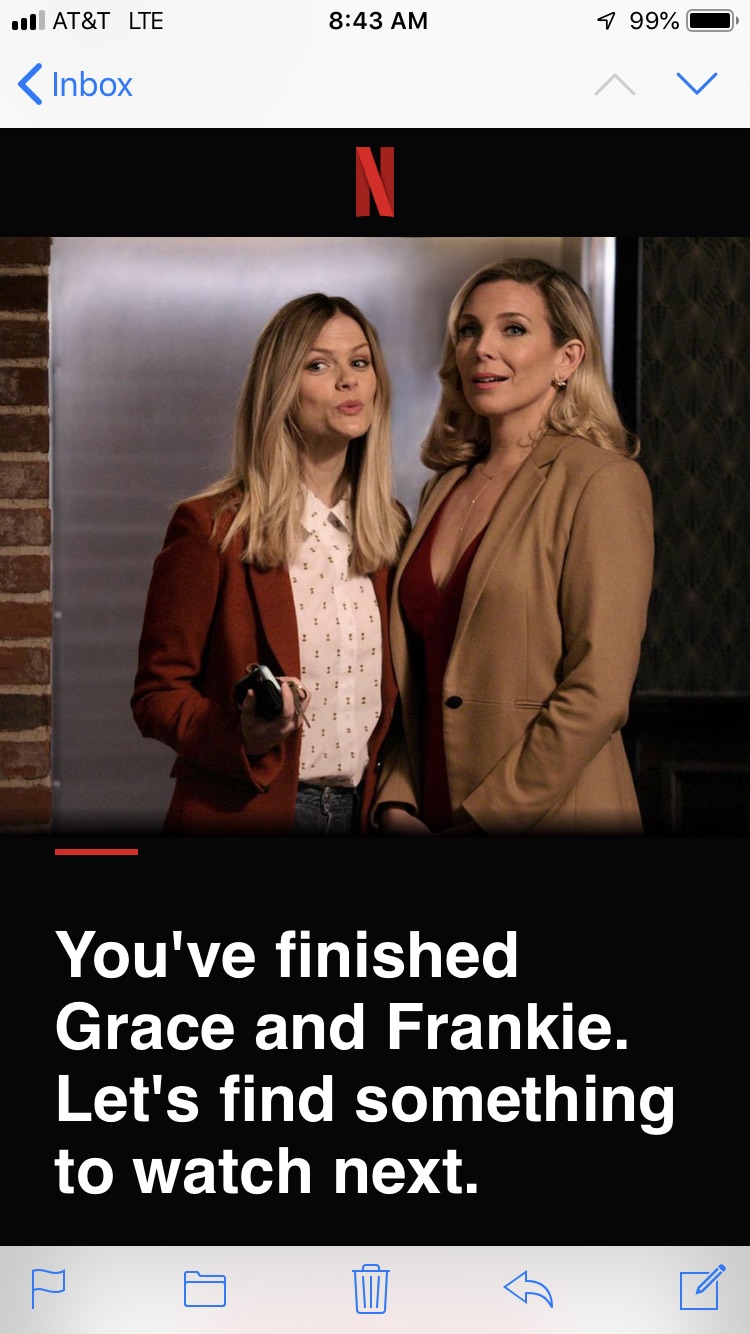
This is more than artificial intelligence and algorithms at work. Netflix continually proves it “gets you” – the gateway drug for brand intimacy. It learns what you like, how and when you watch, and the content that moves you. The email is personal, suggesting Netflix is much more than just another subscription video streaming platform. Netflix helps you achieve a pleasant, rewarding user experience especially during valued “spare time.”
“The Principles of Brand Intimacy” by Mario Natarelli breaks down the Netflix strategy. In the process, he suggests that connection comes from continued usage. You don’t become intimate with a brand – or a person – without repeated contact.
“Any brand of any size can apply the principles of brand intimacy to succeed.”
That’s encouraging to any radio station rethinking how it fits into an expanding information and entertainment ecosystem.
Natarelli says there are six archetypes of brand intimacy. And we’ll explore them all in tomorrow’s post, and apply them directly to radio.
It’s not about budget or staff size, having billboards, a new van, or contest dollars. It is about emotionally connecting with an audience – a tribe – and making them feel a part of your station’s family.
Note that none of the streaming audio entities broadcast radio competes against is on MBLM’s list of most intimate brands. That suggests a local radio station could accomplish this, in spite of being outspent financially.
And that’s tomorrow’s blog topic – how radio can achieve true love – with its listeners and advertisers.
- Can Radio Afford To Miss The Short Videos Boat? - April 22, 2025
- Media And Technology In 2025: Believe It Or Not! - April 18, 2025
- In Radio, You Just Never Know - April 17, 2025



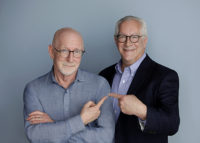
These words are golden and should be hanging on the wall of every radio brand manager: “You don’t become intimate with a brand – or a person – without repeated contact.”
Can’t wait until tomorrow’s blog.
Thank You Fred
Thank YOU, Dick.
Great post on an important topic, Fred. A few years ago in Seattle, we had an eye-opening experience at KIRO-FM. An AM station in Bellingham (90 miles north, and outside our Metro) put up an FM translator on our frequency. We couldn’t block it, because it was outside of our protected contour. People in Bellingham went nuts, and we received literally hundreds of letters, emails and calls from people saying “KIRO is the one radio station that isn’t replicated anywhere – there’s no substitute for what you do. Please find some way to get KIRO back on up here.” I’m not sure if that was emotional intimacy or irreplaceability, or a combination. But we were humbled and emboldened. We sent the listener messages to the FCC, and ultimately that Bellingham station agreed to find another channel. I often think about that story, and wonder how many radio stations would generate a similar uprising if one day people woke up and couldn’t hear us anymore.
Carl, great story. For those of us lucky enough to have worked with brands like KIRO, it’s a very special thing. Thanks for the comment & reading our blog.